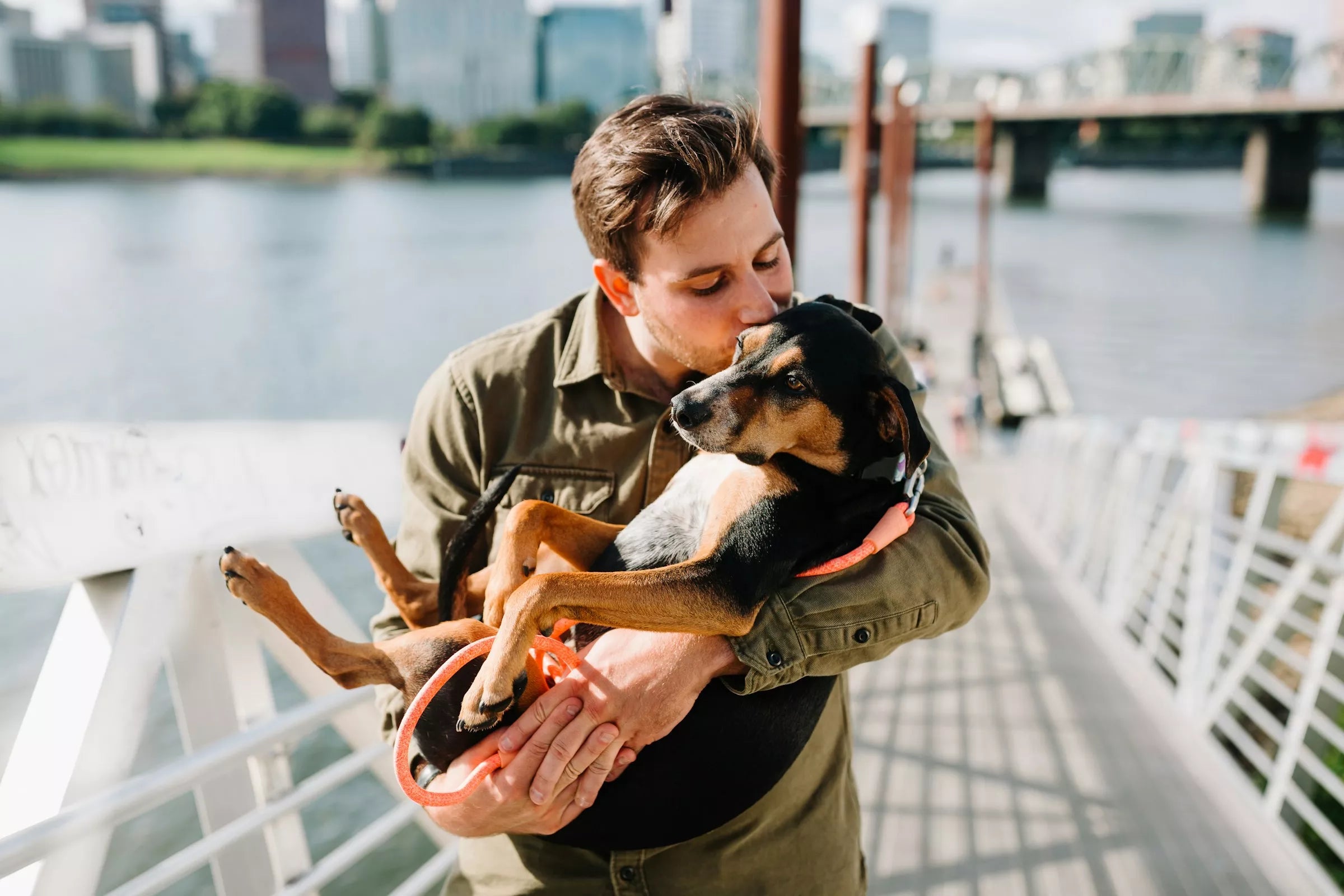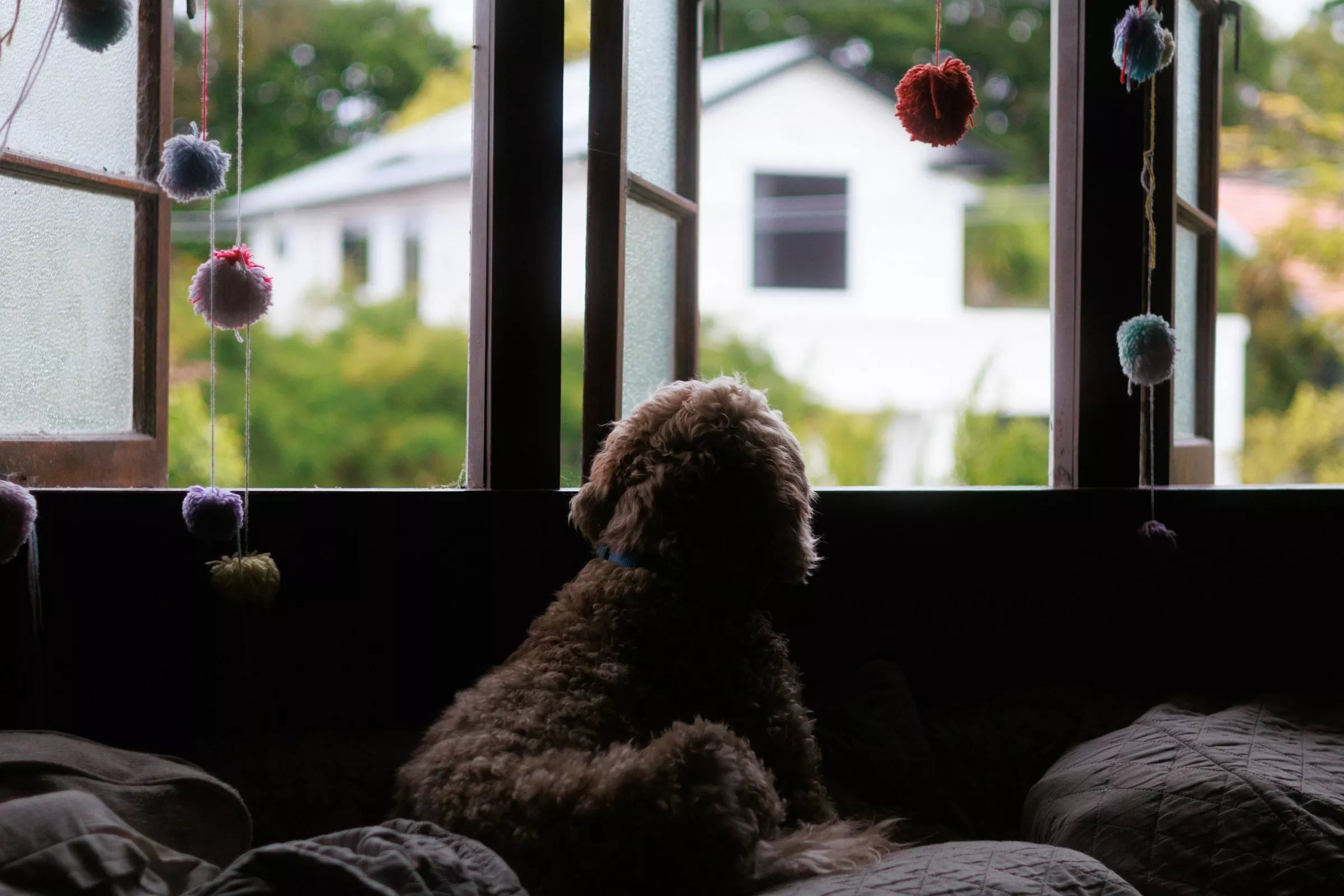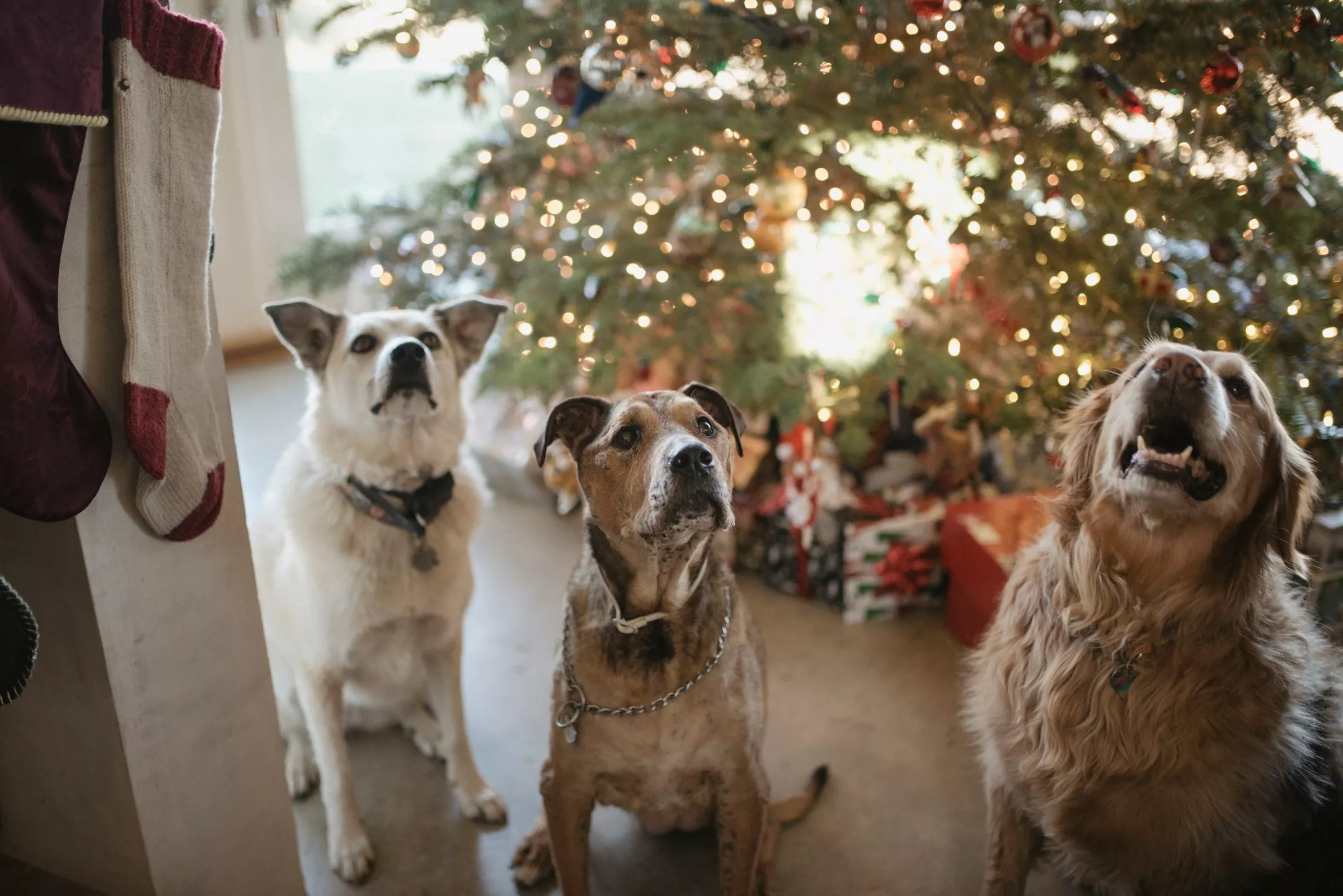Your dog might not be able to speak your language, but they’re constantly communicating — especially when it comes to love. Through subtle cues, affectionate habits, and learned trust, dogs show their attachment in ways that science increasingly recognises as genuine emotional bonding.
Here are six signs that your dog doesn’t just enjoy your company — they truly love you.
Jump to:
- 1. They Follow You Everywhere
- 2. They Make Soft Eye Contact
- 3. They Sleep Close to You
- 4. Their Tail Language Is Relaxed and Happy
- 5. They Bring You Toys (Even Their Favourite Ones)
- 6. They Seek Comfort From You
- FAQs
1. They Follow You Everywhere
 If your dog shadows you from room to room — yes, even to the bathroom — that’s not just curiosity. It’s a deep sign of attachment. In the wild, dogs are pack animals that rely on close proximity for safety and belonging. When your dog stays by your side, it’s their way of saying, “You’re my person.”
If your dog shadows you from room to room — yes, even to the bathroom — that’s not just curiosity. It’s a deep sign of attachment. In the wild, dogs are pack animals that rely on close proximity for safety and belonging. When your dog stays by your side, it’s their way of saying, “You’re my person.”
According to a study published in *Animal Cognition*, dogs release oxytocin — the same “bonding hormone” humans feel — when they’re close to their owners. That connection is mutual, which explains why their presence feels comforting to us too.
2. They Make Soft Eye Contact
Prolonged, gentle eye contact between a dog and their owner has been shown to increase oxytocin levels in both. Unlike staring, which can be threatening in dog language, soft eye contact is trust in its purest form.
Next time your dog gazes at you with relaxed eyes, know that it’s one of their quietest — and most powerful — ways of saying “I love you.”
3. They Sleep Close to You
 When your dog chooses to sleep near (or on) you, they’re showing that they feel safe and connected. Dogs are most vulnerable when they sleep, so sharing that space means they see you as part of their pack.
When your dog chooses to sleep near (or on) you, they’re showing that they feel safe and connected. Dogs are most vulnerable when they sleep, so sharing that space means they see you as part of their pack.
Whether they curl up by your feet or snuggle next to you on the sofa, their closeness reflects a deep emotional bond — not just warmth or comfort.
4. Their Tail Language Is Relaxed and Happy
Tail wagging doesn’t always mean happiness — but when it’s loose, mid-level, and accompanied by a wiggling body, it’s a clear indicator of affection. Dogs that feel comfortable and content around you will display soft, open body language with relaxed ears and eyes.
For a more detailed guide, read our blog on Dog Body Language 101: What Your Pup Is Really Saying.
5. They Bring You Toys (Even Their Favourite Ones)
 If your dog proudly drops a toy at your feet, it’s not always a request to play — sometimes it’s a gift. Sharing prized possessions (like a squeaky toy or bone) is your dog’s version of generosity and trust.
If your dog proudly drops a toy at your feet, it’s not always a request to play — sometimes it’s a gift. Sharing prized possessions (like a squeaky toy or bone) is your dog’s version of generosity and trust.
It’s their way of inviting you into their joy and saying, “You make my world better.”
6. They Seek Comfort From You
When your dog is frightened, unwell, or unsure, who do they come to first? Seeking you out for reassurance or cuddles is a strong sign of emotional dependence and love. You are their safety net — and in return, they become yours.
That bond goes beyond companionship. Studies show that dogs view their owners as attachment figures, much like children do with parents. It’s love in its truest, most loyal form.
FAQs
Do dogs actually feel love?
Yes — multiple studies show that dogs experience emotions similar to human affection, with oxytocin release playing a key role in bonding.
Why does my dog lick me all the time?
Licking can be a sign of affection, but it can also be a self-soothing behaviour. Gentle, calm licks often mean love.
My dog doesn’t cuddle much — does that mean they don’t love me?
Not at all. Some dogs show love through following you, bringing toys, or simply being near. Affection looks different for every personality.
Do dogs know when we love them?
Yes — dogs can interpret tone, body language, and even facial expressions. They sense kindness, attention, and consistency as signs of love.
What are subtle signs my dog trusts me?
Relaxed posture, exposing their belly, or sleeping with their back toward you all signal deep trust.
To strengthen your connection further, check out our blog on 5 Ways to Build a Stronger Bond With Your Dog.














Share:
Tips for Starting a Pet Care Business
Why Your Dog Waits for You at the Door